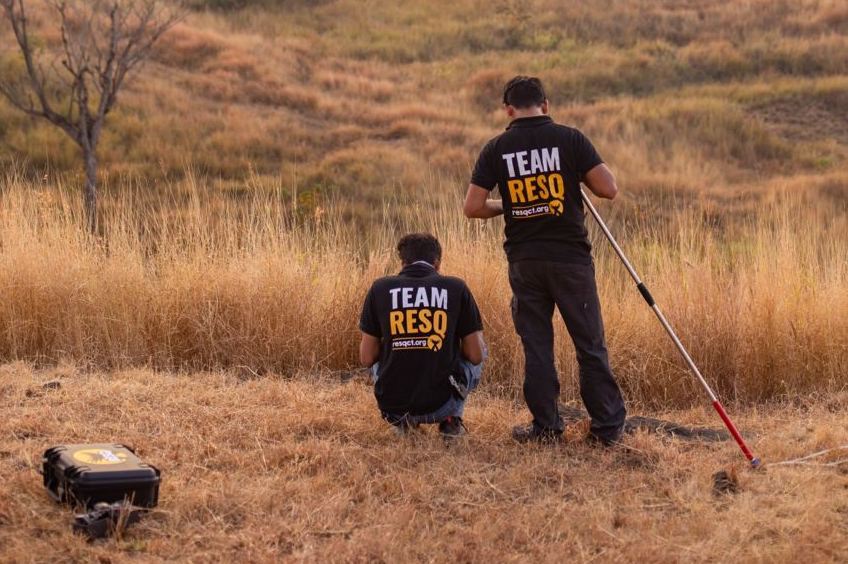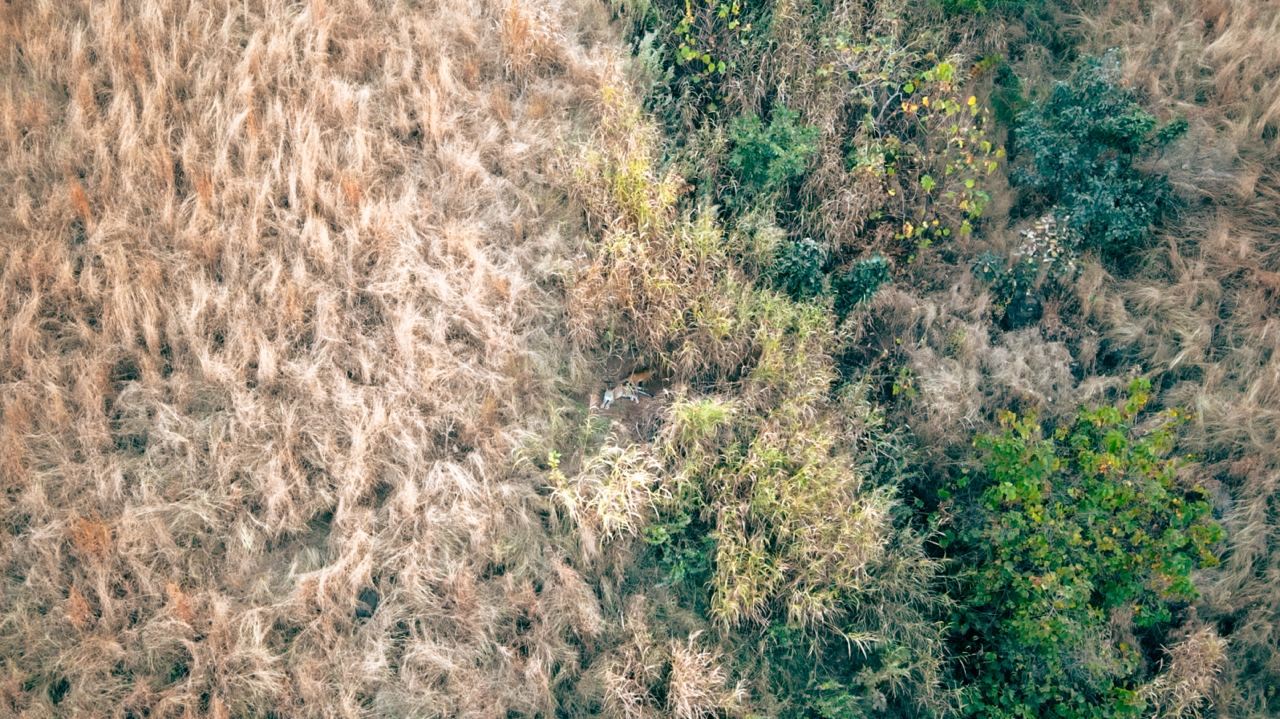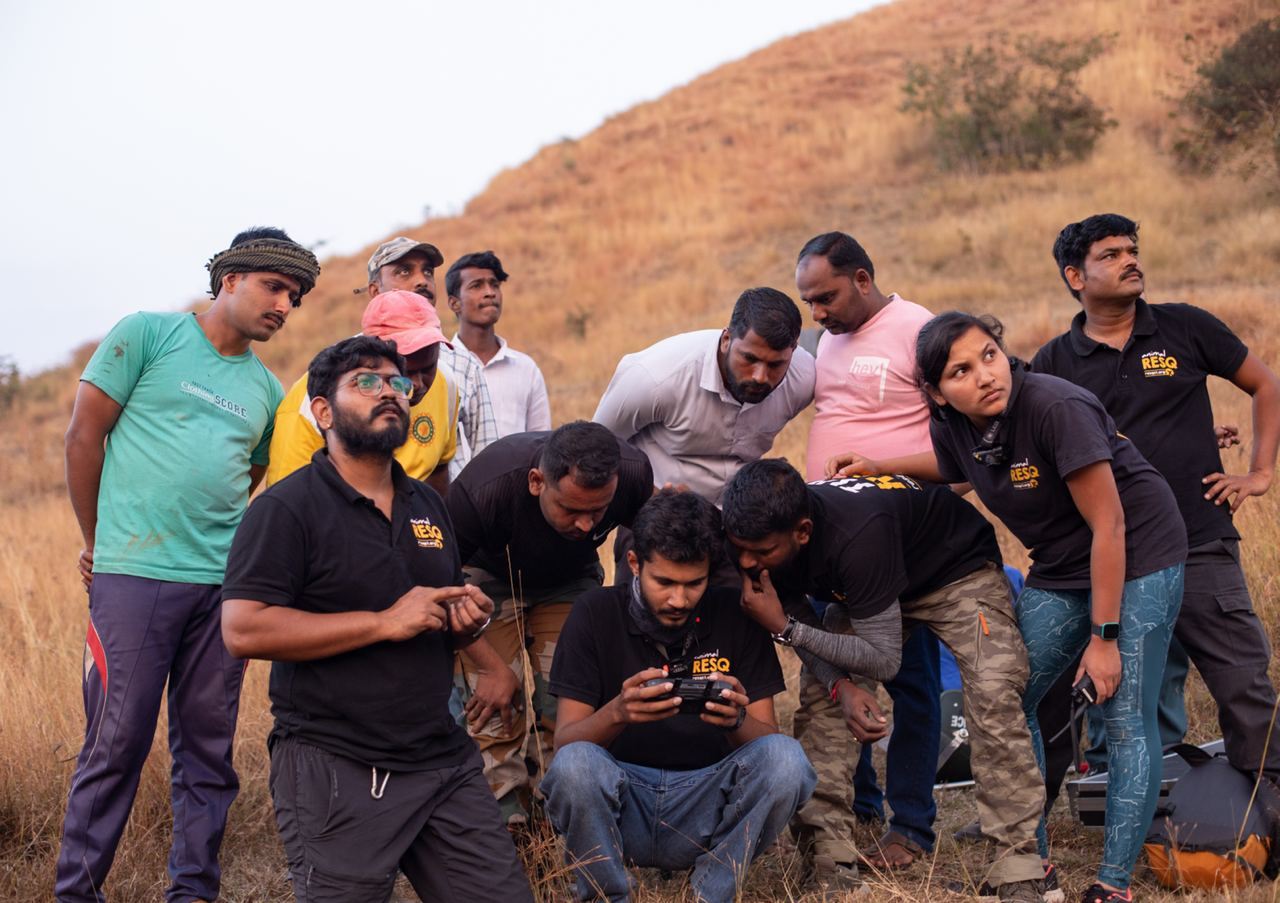Satara (MH): Preventing negative human-leopard interactions in Satara, Maharashtra.
“There are very loud snarling sounds coming intermittently from place near a farmer’s field. The villagers are extremely scared, and we don’t think it’s safe to walk straight into the field to check on it. Do you think your drone would work to check on what is going on inside so we can avoid a panic situation or an untowardly incident?” said Tushar Navale, Range Forest Officer from the Maharashtra Forest Department (Karad Range, Satara Division). He sounded seemingly overwhelmed with a sense of urgency to me as a large crowd of people was beginning to show up at the site. It was 11:20 am when we spoke and assured him that I would send Tuhin Satarkar and the team immediately from Pune. He told me that his staff would manage the crowd until our team reached the location.
Barring the reported sounds, we had absolutely no idea what to expect as there was absolutely no visual confirmation from the area. RFO Navale, Tuhin Satarkar and I discussed possibilities of a leopard being stuck in a hunting trap, maybe gravely injured or sick lying somewhere. RFO Navale told us that some locals had heard loud sounds as though the animal was in pain from the last 3-4 days. He said that they described it as a ‘roar’ and thus no one had had the courage to venture in.
Since we didn’t know what to expect, we packed every possible capture and restraining equipment, ensured an experienced veterinarian, Dr. Kalyani Thakur, accompanied us along with a team of rescuers who have efficiently handled leopards in different field scenarios. Tuhin charged up his thermal drone as he and the teams drove quickly to Satara. The Forest Department staff managed to keep the crowd away from the site and ensured everything was calm.

As soon as the team reached, Harshad Nagare, Amit Todkar, Sumedh Tarde and Sayli Pilane scouted the area and identified a safe location to operate from. Tuhin Satarkar and the forest department staff decided that they would strategize the follow-up plan once they located the animal on the drone and got an idea of what was going on.
The wind was blowing in one direction as Tuhin flew the drone above the area where the sounds were coming from. Nothing unusual was visible from the side it was flying as the tall grasses concealed anything that was even possibly moving. When he flew the drone from another direction, he noticed some movement on his screen and here’s what he saw:
A mating pair.
What Tuhin saw on his drone controller screen was two leopards frolicking in the field, unperturbed. One larger and calmer than the other. The larger following the smaller leopard diligently, undeterred as the smaller one made strides hastily. It appeared as if they were playing and the smaller one was enjoying being chased. A mating pair of leopards, in action and that’s what all the noise was about. A mating pair explains the reason why intermittent roars were being heard for the last few days as a mating pair stays together for a week, sometimes two and mate in short bursts which is often painful for both the female and male, invoking agitated roars every now and then.
Safer and smarter.
While the thermal drone gave us a clear visual of what was really going on and watching the mating pair chase each other down unperturbed was a sight to see, there are far greater benefits to using the thermal drone as a first step to scan an area where there are several unknown variables.
The leopards would have possibly moved off if they heard humans approaching, but it truly would not have been the wisest thing to walk in on a mating pair irrespective of taking every possible precaution while approaching an animal on foot.

Safe leopard and safe people.
The local community was mortified for the last couple of days and insistent that the forest department capture the animal inside the field for their own safety. The ones who had apprehensions about the population increasing were made aware of the negative consequences of capturing peaceful ‘non-conflict’ causing leopard individuals. Once they were shown the drone footage and explained that the leopards were a couple mating and that if left undisturbed for a few days, would move off peacefully, the locals completely calmed down.
It is often fear of the unknown that is an underlying factor driving human-wildlife conflict.
While it is critical to protect animals, we have come to realise that only way to foster coexistence between wildlife and local communities is to use a balanced approach and ensure that people feel responsible for their own safety without feeling burdened. When the right narrative is used to make local communities aware about wildlife that they share their ecosystem with, it is well received and extremely satisfying to watch locals actually putting into practice the safety measures that they are imparted knowledge and information about.
In addition to effective communication, in this case a strong visual served as proof to the local community that they were not being fed a story to merely pacify them. When they saw that the leopards were just engaged with one another and told how leopard behaviour works, they willingly volunteered to ensure that they will take safety measures for themselves and ensure that no one from the village ventures in that area for a week at least.
Multiple tools and measures require to be implemented to prevent or respond to human-wildlife conflict depending on the situation. Technology like thermal UAVs when used at the right time can prove to be extremely beneficial and complement on ground efforts for all stakeholders involved.
